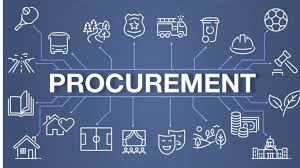The commercial procurement environment has undergone a revolution with the introduction of computerized procurement technologies that have entirely restructured the approach through which businesses undertake their purchase processes. These are sophisticated digital technologies that offer new, unimaginable levels of efficiency, control, and strategic insight, and a drastic break with the old traditional paper-based processes. The features of e procurement tools are all-inclusive of the initial request, up to the final payment, as well as the supplier evaluation of performance and efficiency.
- Electronic Requisition Management Systems
The core of contemporary e procurement tools is electronic requisition management, which revolutionizes how staff members submit buy requests and how businesses oversee the preliminary phases of the e procurement process. Paper-based requests are replaced with digital requisition forms, which have user-friendly web interfaces that ensure all relevant data is correctly and fully recorded while guiding users through the process.
In order to prevent mistakes and policy violations at the source, automated validation rules verify request information against authorized vendor lists, budget availability, and organizational regulations prior to submission. Intelligent form routing reduces processing delays and does away with human sorting by automatically sending requisitions to the right approvers based on predetermined criteria like quantity, category, or department.
- Digital Catalog Management and Product Selection
While keeping control over vendor relationships and buying decisions, digital catalog management technologies transform how businesses show employees their alternatives for goods and services. Employees may simply browse through centralized product catalogs to locate authorized products at pre-negotiated pricing, which combine offerings from several vendors into a single, searchable database. By limiting access to unapproved alternatives, intelligent procure to pay systems minimize maverick expenditure while rationally organizing products to facilitate the rapid location of necessary things.
Rich product information, such as pictures, specs, and compatibility information, lowers ordering mistakes and returns while assisting consumers in making well-informed selections. Cost-conscious purchase decisions are made possible by dynamic pricing displays, which indicate current prices, volume discounts, and contract conditions.
- Supplier Registration and Onboarding Portals
Supplier registration portals facilitate quicker supplier onboarding and ensure a complete qualification and compliance verification before any business partnership commences. Self-service registration interfaces enable suppliers to present the relevant certificates, documents, and business details using standardized web forms that collect all the information required to perform qualification evaluation. Verification procedures are automated to verify the qualification, financial stability, and compliance with the industry norms and corporate rules of a supplier.
Document management includes insurance policies, supplier approvals, and other compliance documents that are safely stored and organised with automatic expiry tracking and weekly renewal after-notices. Clear performance standards and measurement criteria are provided by performance assessment frameworks, which also set baseline measurements and expectations for new vendors.
- Purchase Order Automation and Processing
Throughout the ordering process of e procurement tools, purchase order automation ensures accuracy, uniformity, and compliance while doing away with the need to create documents by hand. Approved requisitions are automatically transformed into correctly designed purchase orders with precise vendor details, price, and delivery information by intelligent order creation. Using combined communication networks, electronic transmission services send direct messages to suppliers, eliminating any delays in delivery and eliminating the manual mailing processes.
An order tracking procure to pay system can provide real-time visibility of order status, shipment information, and future delivery dates to all the interested parties. There are automated matching algorithms that are used to compare purchase orders, invoices and receipts and identify inconsistencies to prevent payment issues. Change management workflows handle order cancellation, modification, and track audit trails and supplier correspondence.
- Invoice Processing and Payment Workflow Management
Through automated workflows that save human labor while increasing accuracy and adherence to corporate regulations, invoice processing technologies revolutionize accounts payable operations. E procurement tools invoices can be received using electronic invoice receiving capabilities via a variety of methods, such as online portals, email, and electronic data interchange connections. Accurate invoice data is captured using automated data extraction methods, which do away with manual data entry and cut down on processing time and human error.
In order to find inconsistencies and authorize regular payments, three-way matching algorithms automatically check invoices with purchase orders and receipts. Workflow routing systems keep thorough audit trails while directing bills to the right approvers according to department, quantity, and approval powers. Through organized workflows that guarantee prompt resolution, exception management procedures address invoice inconsistencies, contested charges, and approval delays.
- Contract Lifecycle Management Capabilities
Tools for contract lifecycle management offer thorough supervision of supplier contracts from the point of original negotiation to their renewal or termination, guaranteeing that businesses get the most out of their contractual arrangements. All supplier agreements are kept in searchable databases at centralized contract repositories, giving users immediate access to the terms, conditions, and responsibilities of each agreement.
Stakeholders are informed by automated alerting systems when milestone responsibilities, renewal deadlines, and performance standards that call for attention or action are approaching. Template management features allow for modification for certain supplier connections and particular needs while standardizing contract language and conditions. Through shared workspaces that preserve version control and monitor modifications during the negotiation process, collaboration capabilities facilitate multi-party contract discussions.
- Reporting and Analytics Dashboard Features
Extensive reporting and analytics opportunities are used to convert procurement information into the form of precise corporate understanding, thereby favoring changes in operations and strategic choices. Interactive dashboards enable real-time visibility of crucial performance through indicators of performance with regard to suppliers, spend data, and process efficiency measures.
Through customizable reporting tools, the user need not possess much technical knowledge, and they can design comprehensive reports relating to some roles, duties, and information needs. Features of trend analysis include finding trends in market circumstances, supplier behavior, and expenditure that help guide strategic sourcing and procurement strategy. Benchmarking capabilities reveal areas for improvement and insights into competitive positioning by comparing an organization’s performance to industry standards and best practices.
Conclusion
E procurement tools are advanced technical solutions that cover all facets of contemporary purchasing operations and offer strategic benefits that go well beyond increases in operational efficiency. The aforementioned essential elements show how an all-inclusive procure to pay system converts conventional procurement procedures into efficient, intelligent operations that promote organizational performance and competitive advantage. Organizations are better equipped to assess e procurement tools and find characteristics that fit particular company needs and strategic goals when they are aware of these core capabilities.






